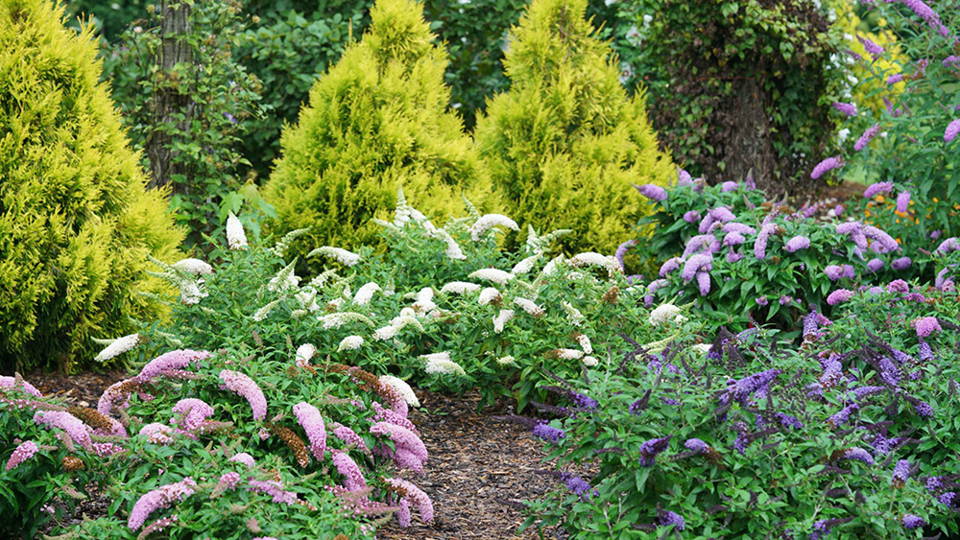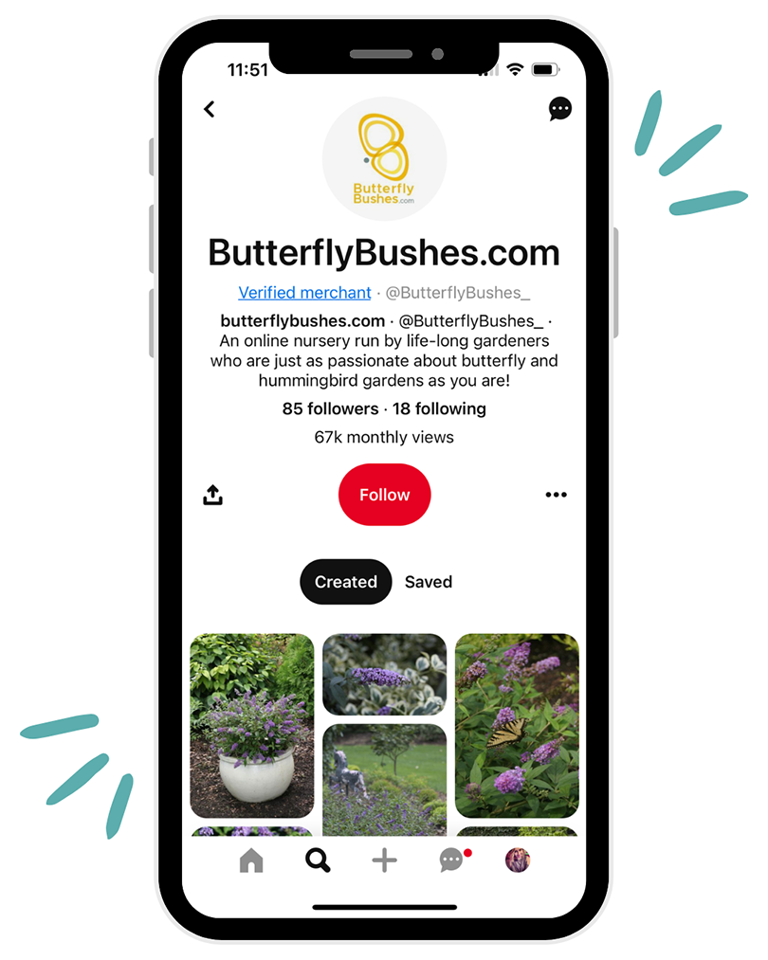Butterflies & Beyond: How to Design a Pollinator Garden

Why Are Pollinator Gardens Important?
Pollinator gardens are important because they provide food sources and habitats for pollinators, such as bees, butterflies, birds, caterpillars, and more - which are critical for maintaining the health and productivity of the ecosystem. Pollinators play a vital role in the reproductive process of many plants by transferring pollen from the male part of the flower to the female part, which enables the plants to produce fruits and seeds. With pollinators, many of the fruits, flowers, and vegetables we rely on would be available, and the diversity of plant species in ecosystems would be significantly improved. The purpose of a pollinator garden is to provide food, shelter, and nesting sites for pollinators, which can help to support healthy populations of these important species. In addition to their ecological benefits, pollinator gardens can enhance the beauty of urban and suburban landscapes!
7 Tips For Designing a Pollinator Garden
While it may seem daunting at first, adding a pollinator garden to your outdoor landscape doesn't have to be complicated! With some inspiration, research, and nectar-rich flowers, welcoming wildlife to your garden can be shockingly easy. Read on as we discuss seven tips for designing and implementing a pollinator garden.
#1. Research & learn about pollinators
Nearly 80% of the world's food and plants require pollination, solidifying the dire need for these critical species. Society must continue to learn more about pollinators and ways their habitat and food sources can be encouraged. This is where you come in! Before you plan your garden, consider doing more in-depth about native pollinators in your area, which one's you'll be supporting with your garden, and unique environmental struggles. To do so, try signing up for pollinator garden educational programs or get certified in pollinator stewardship.
#2. Get inspiration & identify goals
Getting inspired and setting goals for your pollinator garden can be a fun and creative process that allows you to connect with nature and express your unique style! Maybe you want a whimsical cottage garden, or you're planning a monochrome color design; the possibilities are endless. Pinterest is one of our personal favorites, and you can even create and divide your inspiration 'pins' based on your unique garden layout or by which pollinator you're attracting. You can also get inspiration from industry blogs like GreatGardenPlants.com and Hydrangea.com.
After getting inspiration, begin setting some goals, like attracting specific species of butterflies or bees or creating a relaxing and peaceful outdoor space for yourself and your family; the more you understand the purpose of your garden, the easier it is to create an action plan. Get more inspiration for your garden on Butterflybush.com below, and click on our Pinterest to give us a follow!
#3. Start planning
Now that you've done your research, it's time to start planning. Planning your garden is essential in creating a beautiful and functional pollinator garden. We love using a sketchbook to draw out a rough garden layout! Decide where to place your plants, pathways, and other garden features. Consider the size and scale of your garden, and make sure your design is proportional. It's also important to keep in mind the levels of sunlight, water, and quality of the soil of your garden site while planning. Once you've finished your plan, you can begin to gather materials, make a list of plants, and schedule maintenance tasks.
#4. Think outside the box
Pollinators think outside the box, and you should too. Get creative with placing your plants! Consider incorporating elements of companion plants that feature vibrant color, interesting texture, and contrast to create visual interest and depth. Mix pollinator plants with different heights, textures, and shapes to add dimension and variety. Plan a pathway or plant in a window bed; before you know it, your multi-purpose flowers will attract pollinators and wow your neighbors.
#5. Find your perfect pollinator plants
When choosing pollinator plants for your garden, it's essential to consider several factors to ensure that you provide the best possible pollinator habitat. First, consider choosing native plants as they are non-invasive and have adapted to your local climate and soil conditions. This is always an excellent option for beginner gardeners! Second, select various plants that bloom at different times throughout the growing season to provide a continuous source of nectar and pollen to keep your garden 'buzzing' year-round. Third, consider the shape and size of flowers, as different pollinators are attracted to different shapes and sizes of flowers. For example, hummingbirds prefer long, tubular flowers, while bees and butterflies are attracted to clusters of smaller flowers. And last but not least, get creative with vibrant and unique plants!
Remember: Not all native plants are inherently beneficial to pollinators. If you're specifically looking native plants, conduct research as to which ones are also pollinator-friendly.
#6. Planting & pruning
After establishing your garden design and purchasing your plants, it's time to grow! Gently remove the plant from its container, loosen the roots, and place it in the hole, ensuring the top of the root ball is level with the soil surface. Next, backfill the hole with soil and water to help the plant establish a healthy root system. If planting multiple plants, space them according to their recommended spacing to prevent overcrowding. As far as pruning goes, don't! Instead, wait until temperatures rise and plants break dormancy, then gently compile any fallen leaves or garden debris. This reduces the risk of disturbing pollinator homes or the eggs they have laid in them. Learn more about why you should delay your spring garden cleanup:
#7. Evaluate and enjoy
You've done all the hard work - now is the time to sit back, relax, and watch your garden become a buzz with pollinators and wildlife! When evaluating your pollinator garden, ask yourself the following:
- Are my plants receiving enough sunlight and water?
- Are there bare spots in my garden that could be filled with companion plants?
- What pollinators are being attracted to my garden?
If you're using a gardening journal, consider noting areas of improvement for next season. Browse native and pollinator plants on ButterflyBush.com!


